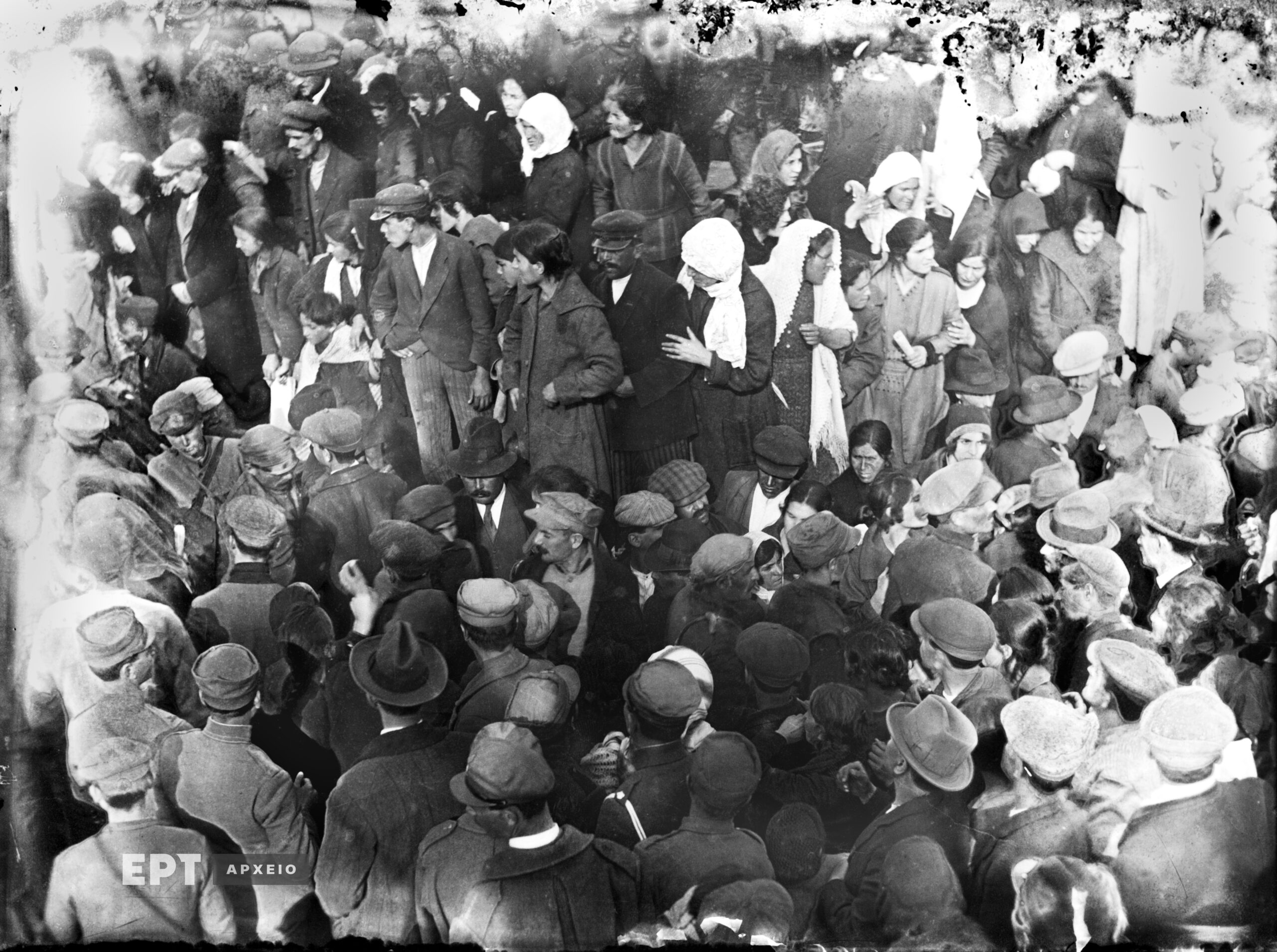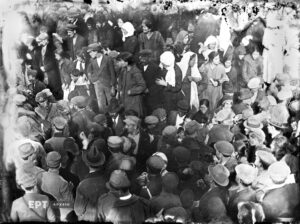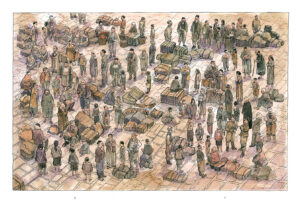The arrival of the Asia Minor Catastrophe refugees at the port of Piraeus
City
Migration Period
City Narratives
Category
Full Description
‘Two thousand refugees from Asia Minor arrived in Piraeus yesterday on the steamboats Genua and Amazonia. Of them, 1,500 were wealthy while the rest were destitute. They were received by the Ministry of Welfare and distributed in various refugee housing facilities in Piraeus. The Ministry also ordered the municipal services to provide them with food and medical assistance’.
This single column from the newspaper Empros [Forward], on August 31, 1922, marked the transition into a new era. As the first steamboats filled with refugees were approaching the port of Piraeus, 150,000 new refugees had already disembarked on Chios, Lesbos, Samos and Raidestos. Despite the fact that all the refugees had experienced forced displacement and had travelled under the same horrible conditions, they were not all met with the same difficulties upon their arrival in Greece, as attested by their separation into wealthy and destitute in the column quoted above. Wealthy refugees were able to secure housing using their own resources. The destitute refugees who arrived on August 30 had to stay in public buildings or expropriated facilities, while those arriving over the following days were accommodated in makeshift sheds set up on the dock, since the indoor spaces provided for housing were already overflowing.
Thousands of people who had been violently displaced from their homes and had been travelling for up to twelve days crammed in ship holds and subsisting on minimal food and water disembarked at Piraeus and, for days, weeks, or months, were temporarily accommodated in expropriated facilities, or were homeless and had to stay in makeshift sheds along the coastal highway and on church courtyards, all while new ships arrived day after day. The endless refugee camp that formed at the port and the wider city of Piraeus, just like in most Greek ports at the time, was one representation of the ‘refugee shock’ that rocked Greek society after August 1922, when ‘a wave of mostly destitute refugees was added to the community, amounting to about one quarter of the country’s native population’. The photographs taken by Petros Poulidis at the port of Piraeus during that time depict the chaos that reigned at the docks, but also document the harrowing nature of the refugee experience which was engraved on the refugees’ faces.
Table: Refugee arrivals at the port of Piraeus, 31.8.1922 – 30.9.1922, according to the newspaper Empros.
| Date of arrival | Number of refugees |
| 31 August | 2,000 |
| 2 September | 5,500 |
| 3 September | 50 |
| 4 September | 8,000 |
| 10 September | 450 |
| 12 September | 1,740 |
| 13 September | 5,000 |
| 16 September | 4,400 |
| 17 September | 2,400 |
| 20 September | 6,000 |
| 27 September | 2,500 |
| 28 September | 2,200 |
| Total | 40,240 |
Bibliography
Empros [newspaper], 31.8.1922 p. 3 and 6.9.1922, p. 2.
Elefthero Vima [newspaper], 3.9.1922, p. 3 and 5.9.1922, p. 4.
Christos Chatziiosif, ‘The refugee shock, the constants and transformations of the Greek economy’ in Ch. Chatziiosif (ed.), History of Greece in the Twentieth Century, 1922-1940: The Interwar, vol. 2.1, Vivliorama, Athens 2002, pp. 9-57.



